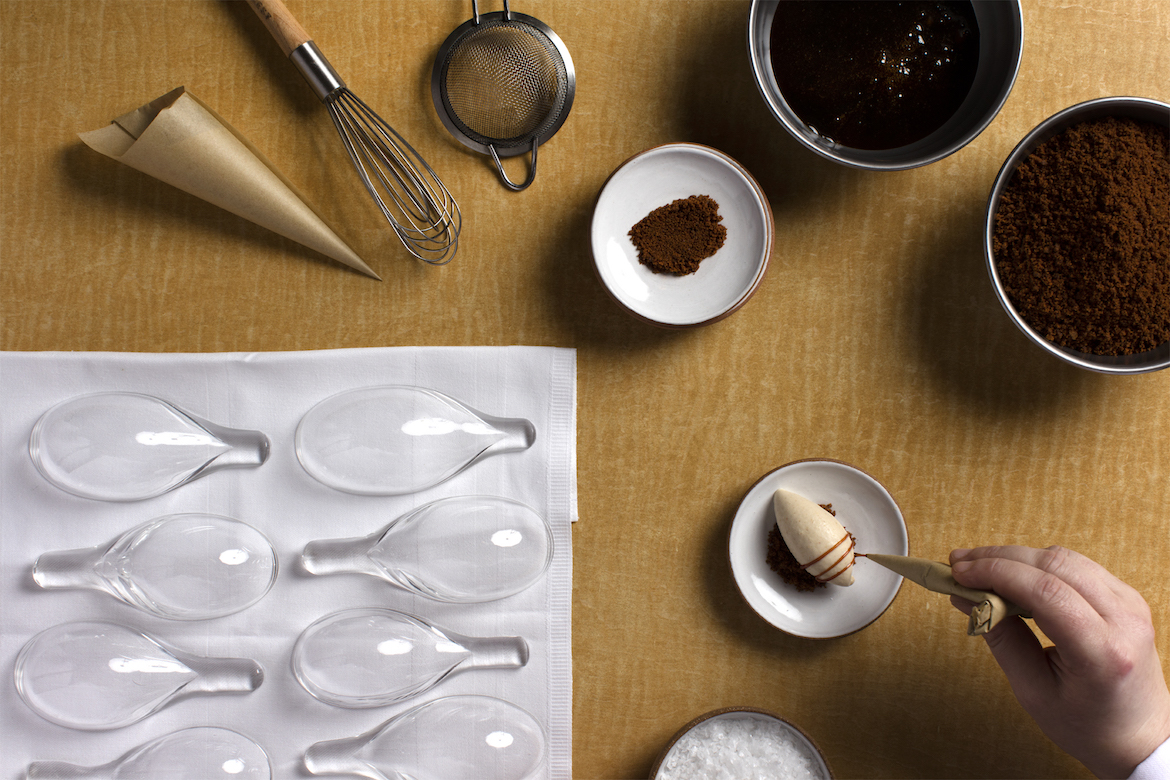If it even exists, what is an authentic New York dining experience? Eleven Madison Park, largely considered to be one of the world’s best restaurants, has taken this question seriously for nearly 20 years.
“Our goal is to create a restaurant with a strong sense of place and cuisine that is New York,” said co-owner and chef Daniel Humm in a 2015 interview in Log. “I think, to define that, it is always the intersection of history and the things that are available here now.”
This ambition has inspired the restaurant to deliver performative, innovative and even fun fine dining. They’ve not escaped some gimmicks over the years (imagine your server practicing tableside card tricks), but duds are scarce. Their immersive dining experience is overwhelmingly inspired, and nowhere is this vision better showcased than with the sweet wine service known as the “botrytis.”
According to wine director Cedric Nicaise, the botrytis may be the least cost-effective course ever served at Eleven Madison Park. It was initially prompted by Tokaji Eszencia: a rare and highly prized Hungarian sweet wine made with grapes affected by botrytis fungus. This gray “noble rot,” as it’s also called, shrivels grapes while concentrating their sugars and consuming acids. When made into wine, the fruit yields an extremely sweet, nuanced and golden nectar, best savored in small quantities.
For this reason, Tokaji is historically served in a crystal spoon. Its semi-elliptical form defines the recommended dosage, and like any desirable wine glass, its material allows diners to appreciate the drink’s color and viscosity. Tasting from one is like supping from an elongated, shallow teacup with a straight handle.
This upscale Old World ritual spoke to Eleven Madison Park’s sommelier, Jon Ross. He and Dustin Wilson, wine director at the time, saw luxurious and dramatic elements, ripe for their brand of reinterpretation. The possibility of this new-old wine service also roused co-owner and general manager Will Guidara, who sensed its potential to be a standard course for every diner. He encouraged Wilson and Ross to collaborate with the kitchen and create a complementary dessert.

Fully realizing a concept of this caliber hardly happens overnight. Each service detail matters, and when uninhibited by cost, there’s room to play. For starters, they serve an ounce of Hermann J. Wiemer’s 2012 Noble Select Riesling from the Finger Lakes. This New York wine has specific almond, ginger and honey notes that are distilled and reinterpreted in its matching dessert: a ginger crumble with bitter almond ice cream, topped with honey syrup. Local artists craft most of the service’s implements, including a maple board by Middletown, NJ-based Blackpoint Woodworking and a slim ceramic dish made by Jono Pandolfi in Union City, NJ.
The restaurant takes its most playful liberties with the glassware. When they first began exploring the Tokaji service idea, the team already had a strong relationship with local glassblower William Couig of furthurdesign. He has made them several pieces — including votives, glasses, water bottles, cloches and carafes — at Fort Greene’s UrbanGlass studio. Not only did they trust him to create the appropriate glass spoon, but they also tasked him with designing a mini wine thief (a tubular implement used to siphon liquid from a container). The idea was that servers would employ it at the table to draw the wine straight from bottle to spoon, creating an elegant and amusing spectacle.
After nine months and about 10 different spoon prototypes, the sweet wine course made its menu debut in winter 2014. For servers, it’s been a fun way to engage and educate diners about the wine and its surprisingly beneficial fungus. For Nicaise, “the coolest part is that it really shows what this restaurant is about in one little piece.”
Diners and critics have been wowed and delighted by the botrytis. New York Magazine deconstructed it last year in their “The Dish” section, and according to a recent New York Times feature on Eleven Madison Park’s evolving menu, the course fits Guidara and Humm’s increasingly minimalistic vision and will appear in future iterations.
Even still, the recognition doesn’t prevent them from losing money on this theater. Each spoon and thief pair rings up to about $160, which is only a fraction of the dish’s total cost (after adding up the dessert, wine, labor and other remaining elements). Things break and chip too, which has them commissioning Couig and others for replacements on a monthly basis.
Cost is the last variable Eleven Madison Park considers in any endeavor, however, especially when an idea seems to work. “Does this make financial sense? Is it possible to execute? Those are never questions that we’re limited by,” says Nicaise. “And if it can be local, that’s even better.”



